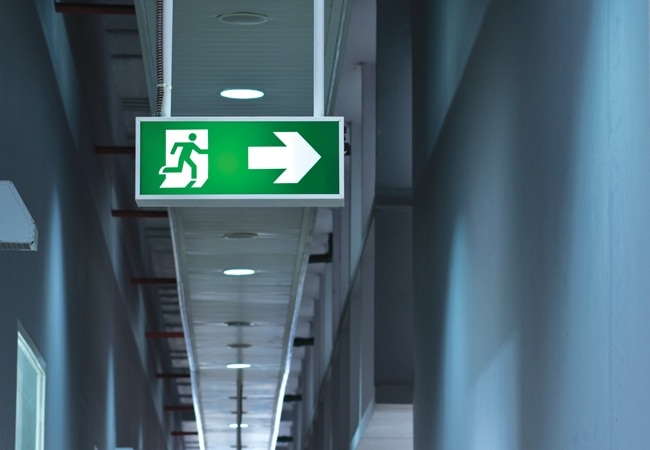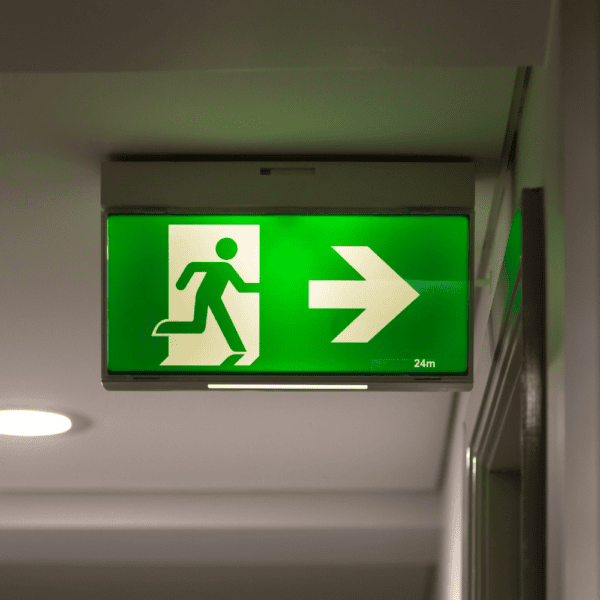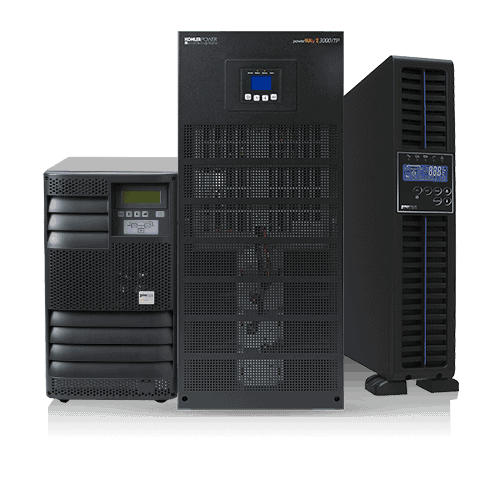A failure to install a building emergency lighting solution that is compliant and therefore effective can have serious repercussions; not only for the building’s occupants, because of the obvious safety risk, but also for its owners, who can face severe fines or even imprisonment. Accordingly, this post looks at what compliance actually means, and how to achieve it.
Unfortunately, it is not illegal to sell non-certified, non-approved products in the UK. Instead, compliance can only be achieved through using some form of third-party verification. Across the UK, this verification is based on the Regulatory Reform Order (Fire Safety) 2005, or RFO, for England and Wales, the Fire Scotland Act, and the Fire & Rescue Services (Northern Ireland) Order 2006 No. 1254. Under this legislation, the Responsible Person, Duty Holder and Appropriate Person respectively have a duty of care to perform a written risk assessment on organisations employing five or more persons, and to only employ competent staff to fulfil this task.
To succeed in this, we need reference standards that we can use for assessing both the people and the products involved in the task.
For products, then, we should only specify, design and apply luminaires – the fittings that distribute, filter and transform the lighting provided by lamps – certified to BS EN 60598.2.22, and Central Supply Units certified to BS EN 50171. This ensures product quality and accurate performance data; for example, photometric performance data that is suitably de-rated to achieve minimum lux levels throughout a project life cycle.
Meanwhile, to ensure staff suitability, the legal duty holder should only employ “Competent Persons”, whose status can be proved by third party formal training and accreditation. BAFE SP203 Part 4, for example, is one way of demonstrating an engineer’s ability to utilise fit for purpose products, and complete installations compliant with the BS 5266 Part 1 2016 Code of Practice. In general, Competent Persons will have the current training and skills needed to help the Duty Holder develop their legally required Fire Safety Risk Assessment. They will also have access to all necessary tools, equipment and information.
Illuminance levels
Illuminance is defined as a value in lux (lx), which is the number of lumens per square metre on the surface being illuminated.
Careful consideration should be given to illuminance levels. BS 5266 Part 1 2016 and its close alignment to EN1838 light levels is a bare minimum, so a fit for purpose risk assessment should cover enhanced illuminance levels, life safety equipment interfaces, and strong support for automated testing.
Note that a simple, outdated spacing table is insufficient to prove illuminance levels. This can only be done with third party tested products, complete with photometric performance data. Tables 1 and 2 show suggested or recommended illuminance data for specific locations.
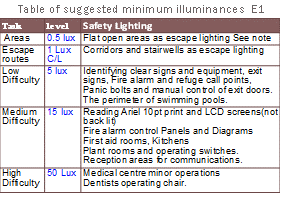
Table 1: Suggested minimum illuminances
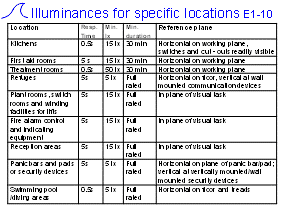
Table 2: Illuminances for specific locations
Installation and ongoing auditing
Installation must accurately reflect the compliant design as represented with appropriate ‘as fitted’ drawings. These should show the luminaires and all fire safety equipment highlighted as specific points of emphasis and illuminated accordingly.
At each stage of the project the auditable documents should be completed with adequate, clear references; updating of the essential Emergency Lighting log book should also be fully supported. The information recorded should include monthly function test results logged by the duty holder or their nominated trained person, and annual full rated duration test data recorded by the competent engineer.
Knowledge-based, in depth support from KOHLER Uninterruptible Power
Above, we have seen the initial steps in achieving a suitable fit for purpose life safety solution for your property. For more detailed advice, support and product information, please consult Ian Watts, Business Development Manager – Emergency Lighting at KOHLER Uninterruptible Power. We maintain close contact and involvement with the relevant Standards committees, and have access to the equipment essential to your emergency lighting installation’s security and your own peace of mind.

